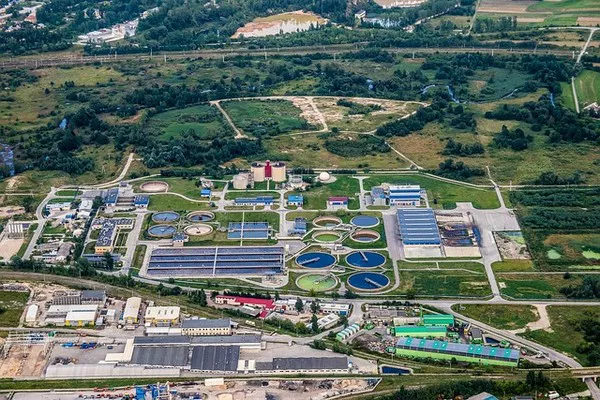Wastewater and sewage are terms often used interchangeably, but they represent distinct concepts within the realm of water management and environmental science. While both involve the disposal of water, they serve different purposes and have unique characteristics. This article aims to shed light on the crucial differences between wastewater and sewage, emphasizing their significance in maintaining environmental health and sustainability.
Wastewater: An Overview
Wastewater is a broad term encompassing any water that has been used and discharged. It includes water from various sources such as households, industries, and commercial establishments. This water may originate from activities like bathing, washing dishes, laundry, or industrial processes. Wastewater is typically classified into two main types: greywater and blackwater.
Greywater is the relatively clean water generated from domestic activities excluding toilet flushing. It includes water from showers, sinks, and washing machines. Greywater often contains fewer contaminants compared to blackwater, making it a potential resource for non-potable water uses like irrigation.
On the other hand, blackwater refers to water that has come into contact with human waste, primarily from toilets. Blackwater is laden with organic matter, bacteria, and pathogens, making it more challenging to treat and requiring specialized methods to ensure proper disposal.
Wastewater Treatment
The management of wastewater is crucial for environmental protection and public health. Wastewater treatment plants play a pivotal role in purifying water before it is released back into the environment. The treatment process involves several stages, including physical, chemical, and biological processes.
During the physical treatment stage, solid particles are removed through processes like screening and sedimentation. The chemical treatment phase involves the addition of chemicals to facilitate the removal of dissolved contaminants. Finally, biological treatment utilizes microorganisms to break down organic matter, further purifying the water.
The treated wastewater can then be safely discharged into rivers or oceans, used for irrigation, or even reclaimed for non-potable purposes. The goal is to minimize the environmental impact and protect ecosystems while ensuring a sustainable water supply for human activities.
Sewage: A Specific Subset of Wastewater
While sewage is a type of wastewater, it specifically refers to water that contains human excreta, often combined with domestic wastewater. Unlike general wastewater, sewage is characterized by its high organic load and the presence of potentially harmful microorganisms.
Sewage is primarily generated from residential areas, where toilets contribute a significant portion of the wastewater. Due to its composition, sewage demands more specialized treatment processes compared to other types of wastewater. The treatment of sewage is essential not only for environmental protection but also for preventing the spread of waterborne diseases.
Sewage Treatment
Sewage treatment involves processes designed to eliminate contaminants and pathogens from the water. The primary objective is to render the sewage safe for discharge or reuse. The treatment typically includes preliminary, primary, secondary, and tertiary stages.
Preliminary treatment involves the removal of large debris and grit through screening and sedimentation. In the primary treatment stage, suspended solids are settled out, and a portion of the organic matter is removed. Secondary treatment employs biological processes, where microorganisms break down the remaining organic matter. Tertiary treatment is the final stage, which further polishes the water, removing any remaining impurities before discharge.
The treated sewage can then be safely released into water bodies or used for purposes such as irrigation, depending on the quality achieved during the treatment process. Proper sewage treatment is crucial for preventing water pollution, protecting aquatic ecosystems, and safeguarding public health.
Key Differences
While wastewater and sewage share commonalities, understanding their distinctions is essential for effective water management. Here are the key differences between wastewater and sewage:
Composition: Wastewater is a broad term encompassing water from various sources, including households, industries, and commercial establishments. In contrast, sewage specifically refers to water containing human excreta, often combined with domestic wastewater.
Source: Wastewater can originate from a wide range of activities, including bathing, washing, and industrial processes. Sewage, on the other hand, primarily comes from residential areas and is closely associated with toilets and human waste.
Treatment Complexity: Sewage typically requires more specialized treatment due to its high organic load and the presence of pathogens. Wastewater treatment can vary in complexity depending on the sources and contaminants present.
Components: Wastewater includes both greywater and blackwater, while sewage specifically addresses the water contaminated with human waste. Greywater is relatively cleaner and may have potential for reuse, whereas blackwater requires careful treatment and disposal methods.
See also What Is Coagulation In Wastewater Treatment
Conclusion
In summary, while wastewater and sewage are interconnected concepts, they represent different facets of water management. Wastewater is a broader term encompassing water from various sources, whereas sewage specifically refers to water contaminated with human excreta. Understanding the differences between these terms is crucial for developing effective water management strategies, ensuring environmental sustainability, and safeguarding public health. As we continue to face challenges related to water scarcity and pollution, proper management of wastewater and sewage remains paramount for a resilient and sustainable future.

